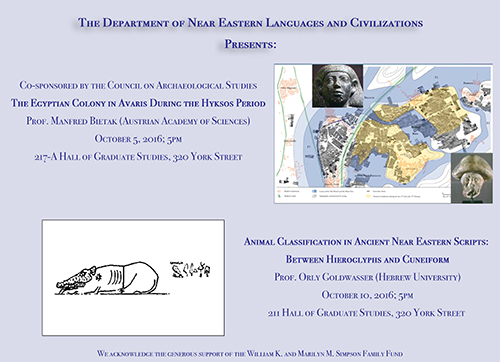2016 October Series

The Egyptian Colony in Avaris during the Hyksos PerioD
Manfred Bietak, Austrian Academy of Sciences, Vienna
The capital of the Hyksos Avaris (now Tell el-Dab‘a in the eastern Delta) was not only inhabited by immigrants from the Near East whom we may call for convenience sake Canaanites. Their power in Egypt rested not only on their own people but also on other ethnicities, especially also on Egyptians. We know from papyri such as Papyrus Westcar and Papyrus Rhind that Egyptian literature and sciences and most probably administration were maintained by Egyptian scribes whose ancestors lived at this town before. Their settlement at ‘Ezbet Rushdi was small, regular and surrounded by a wall. The community survived to live there also in the Hyksos Period when the northern half of Egypt was governed by kings of Near Eastern origin. We can recognize this from the different settlement pattern and the lack of intramural burials introduced by the Canaanites. The Egyptians were even able to enlarge their settling ground on the expense of Canaanite space during the Hyksos Period. This is a sign that they had enjoyed respect under the foreign suzerains. Also other foreign communities lived under the Hyksos in Avaris such as Nubians and Cypriots, but their quarters have not yet been identified. By and by archaeology is able to reveal a multi-ethnic urban landscape in one of the biggest towns of Egypt during the Second Intermediate Period.
Animal Classification in Ancient Near Eastern Scripts: Between Hieroglyphs and Cuneiform
Orly Goldwasser, Hebrew University, Jerusalem
